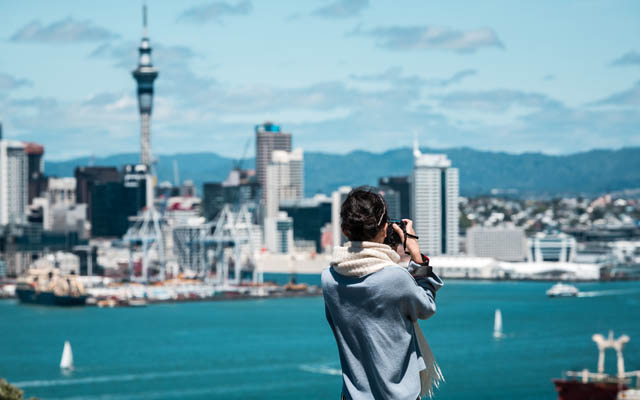As China reopens for international outbound travel, online sharing of unique, first-hand experiences is fuelling a shift in Chinese travel preferences.
China has always been a country where consumer trends move extremely fast, and travel has not been immune in the three years since borders closed at the start of the pandemic, noted Auckland Airport’s chief customer officer Scott Tasker.

“Although (the) Chinese have only really begun international travel in any great numbers in the past few months, there has been a definite acceleration in the move beyond group travel into taking a more independent approach travel,” he said, adding that this is a typical pattern with inbound tourism markets maturing, and was a trend before Covid.
“What’s different is the speed at which this is happening,” remarked Tasker.
While New Zealand was one of the first 20 countries accredited for group travel from China, it had seen a steady decline in group travel prior to the pandemic – from 66 per cent of Chinese tourists in 2012 to 37 per cent in 2019.
He said: “Group travel is still important for newer, less experienced travellers and can help fill in the demand gaps during our quieter seasons but we’re expecting this shift to independent travel to continue, fuelled by the internet reviews and social media content. These increasingly confident travellers tend to stay longer and spend more.”
Speaking at the New Zealand Tourism Forum at TRENZ 2023 in Ōtautahi Christchurch, Tasker commented that the return of regular, direct air connections into China’s largest metropolitan areas unlocks a major market of high-value travellers for New Zealand.
Tasker shared that air connectivity is gaining traction, with Air New Zealand and China Eastern operating daily into Shanghai, China Southern flying daily into Guangzhou, Air China restarting its link with Beijing four times a week, and Hainan Airlines starting its twice weekly service from June.
“We’ll have (a total of) 27 direct flights between Auckland and four major Chinese cities. The ease and simplicity of those direct flights helps get New Zealand on the radar of Chinese tourists,” he said.
Seat capacity between China and New Zealand is currently at 78 per cent of 2019 levels, and forecast to reach 93 per cent of pre-pandemic levels by September.
“While we haven’t seen Chinese travellers in any numbers since pre-pandemic – and that’s still really the case given the need for passport renewals and visa processing – what we do know is they are researching online, watching social media recommendations from fellow Chinese travellers, and taking a really considered approach to travel choices,” noted Tasker.
With more Chinese travellers increasingly going online to plan their next overseas trip, offline channels such as travel agents are rapidly making way for China’s social media platforms such as Wechat, Xiaohongshu and Douyin, coupled with online travel services platforms Fliggy, Ctrip and Qunar, as well as airline direct channels.
Influencers are sharing destinations and experiences in real time, which creates a demand for travel experiences and special interest travel – this shows just how vital video content is.
He opined: “Tourism operators can tap into this, not only by ensuring they have an online presence that inspires Chinese consumers as they scroll (through) travel sites, but by providing experiences for customers with a bit of ‘wow’ factor that they then share directly with their followers.”
This could have the potential to reach millions, he added.
Despite South-east Asia destinations dominating the China market, New Zealand has plenty to offer to the smaller, niché travel market.
“After several years of restrictions, Chinese travellers are now wanting to go somewhere they can escape and relax. Plus, there is a growing trend away from major tourist attractions towards destinations offering nature-based tourism and activities such as hiking, camping and water sports, like surfing,” shared Tasker.




















